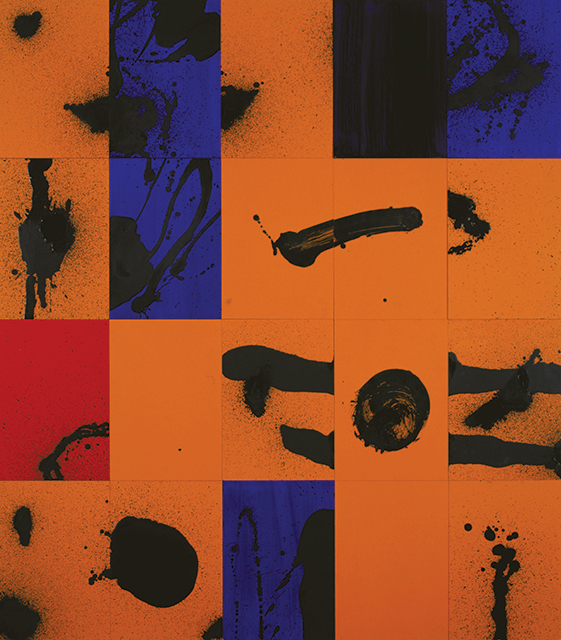


One of the most enduring and resonant ideas in twentieth-century art criticism was presented by Walter Benjamin in his 1935 essay, 'The work of art in the age of mechanical reproduction'. In this famous essay, Benjamin explores the notion of aura—the unique but intangible experience of viewing an artwork in person. Removed from its actual location in time and space, the reproduced artwork becomes suspended in an historical limbo, floating in a world of shifting meanings that may or may not attach themselves to one of its now many versions. Yet as Benjamin points out, the marvel of the reproduction is that 'it enables the original to meet the beholder halfway'—that is, it can exist simultaneously in its own and the viewer's world. However, 'the quality of its presence is always depreciated’. The 'authenticity' of the artwork is interfered with: 'that which withers in the age of mechanical reproduction is the aura of the work of art.' In this Benjamin sees both a shattering of tradition and the creation of the possibility of renewal.1
The body of work that first made Lindy Lee's reputation in the latter 1980s and early 1990s drew strongly on contemporary ideas connected with Benjamin’s thesis. In these works, of which Friend of Titian (1992) is a relatively late example, the artist photocopied old master paintings from books which she then overpainted with wax, oils and pigment. Some images were photocopied repeatedly, building up a sediment of obfuscating ink, and then ordered in grids of incremental density. This handling has been read as an acknowledgment of the degradation of the image, a re-enactment of the distancing or burial of the original. However, for the artist this negative is a positive: as she has said, 'There is a lot of talk of the reproduction as lacking, but I actually see that supposed lack as a space to invent'.2
Following this thought, the works can be read both as a sign of the ineffability of the past, and as a means of becoming intimate with it: rather than being a condition of alienation, seriality becomes a way of getting closer to the work. Like the metronomic effect of mantra, repetition ceases to be a sign of a wearing away of meaning and instead becomes a measure of its accumulation. Ironically, the crude technology of the photocopier cuts through the habituated gaze to reveal some of the raw intensity of the original work's mastery.
In recent years Lee's work has come to be seen in terms of her identity as a first-generation Chinese–Australian. As part of a self-conscious exploration of her Asian heritage, in the mid-1990s the artist underwent Jakai, the ceremonial acceptance of the precepts of Zen Buddhism. Ritual, meditation and the pursuit of transcendence have since become an essential part of her painting practice.
In Waves chatting to other waves (1996), the melancholy of the earlier work has been replaced by a bold, performative style of calligraphic and gestural mark-making. In a kind of automatic painting, mixtures of paint, oil and wax are thrown on the canvas, the success or failure of the effect relying on confidence and chance. It is as though the paintbrush were loaded with the weight of the past (including the artist's own earlier success) in the struggle to create a present for painting.
In this sense Lee's more recent works answer the anxieties of the earlier works about the loss of time and meaning – if there is only a present, there is no such thing as loss. Still, although there is a joyousness in the liberated gestures of this painterliness, the poured and painted marks are not displayed as perfect, whole movements but as discontinuous fragments. Lee’s calligraphy, like her religious practice, is aspirational—part of a process of learning an inherited culture of which she has no memory.
Lee's earlier work seemed very much a product of the discourse of the time, about appropriation and the death of painting; however, as the thinking about art changed over the 1990s, so have the possible meanings of her works. (For example, in an age in which multiples are the pre-eminent art form, reproduction is no longer considered a degradation but an enhancement of value.) Retrospectively, it becomes clear that the works which established her reputation owed less to contemporary theory than to an enduring personal exploration of universal notions to do with immanence and mortality. The different cultural mindsets in which the paintings were conceived—the traditions of the East and the West—are linked by the artist's persisting preoccupation with individuality, time, and painting itself.
- Hannah Fink
Lindy Lee is represented in Australia by Sutton Gallery, Melbourne and Sullivan+Strumpf, Sydney.